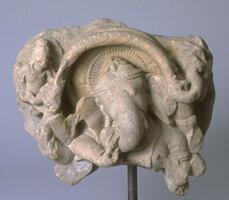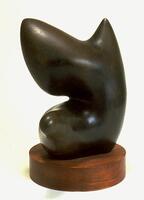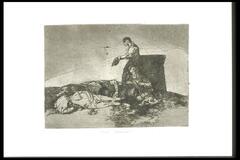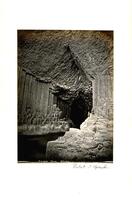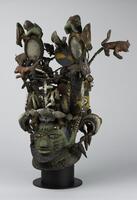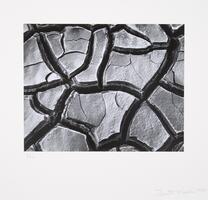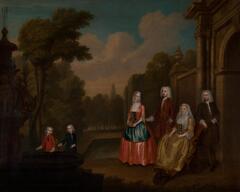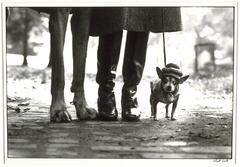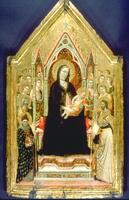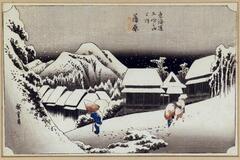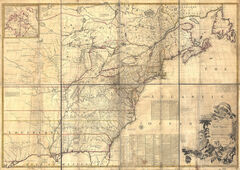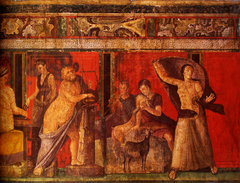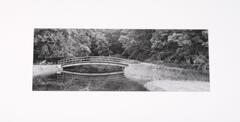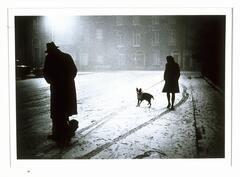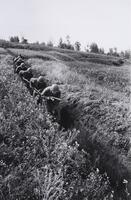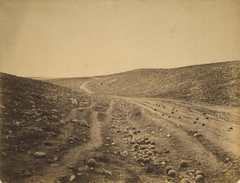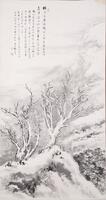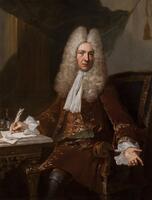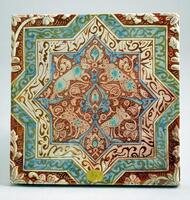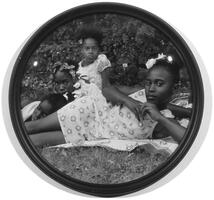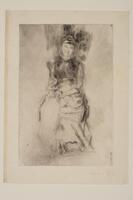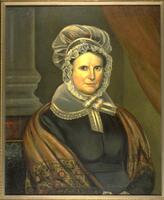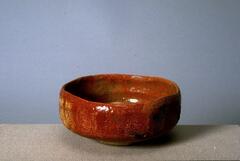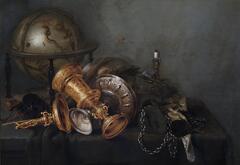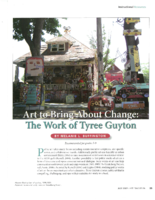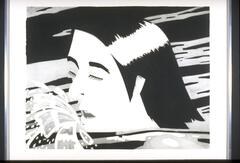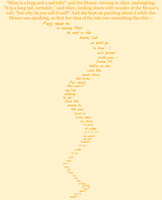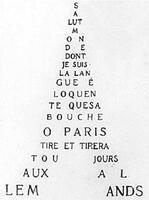Lesson Plan: Calligram
“Doris Duke’s Shangri La: Architecture, Landscape, and Islamic Art” UMMA Teacher Workshop, March 22, 2014
Objectives
Students will learn about calligraphy, typography, and calligrams. They will shape text into a work of art and explore how type can be the artwork, going beyond accompanying the image.
National Core Standards
- Relate artistic ideas and works with societal, cultural, and historical context to deepen understanding
- Convey meaning through the presentation of artistic work
Grades
1-4
Time Required
One class period
Materials
- Images of calligrams
- Paper
- Ink, brush, markers
Lesson
- Post images of different types of animals around the classroom: cats, jellyfish, starfish, birds. You may also want to post other natural forms: leaves, water, mountains, sticks, etc.
- Explain that students will be re-creating these forms, but not drawing them directly. They will use words to form their design.
- Introduce students to the concept of a calligram (calli = beautiful, gram = message). Calligrams use the design and shape of the letters, the ink color, the paper quality, and the frame, to deliver a combined effect and communicate something beyond the message of the letters themselves. French poet Guillome Apollinaire published a book of calligrams, including a poem about the Eiffel Tower and one entitled “Il Pleut (it’s raining),” in which the words fall like rain. Explore the verbal and visual pun in Lewis Carroll’s “The Mouse’s Tale”; it is shaped as a tail, it is written about his physical tail, it is a tale he is telling to Alice. The shape of the poem adds to its meaning. Observe examples of calligrams:
a. Lewis Carroll’s The Mouse’s Tale, Alice in Wonderland
b. Guillome Apollinaire, Calligram about the Eiffel Tower
- Explain that calligraphy is a way to express both a message and an emotion. For Khaled al Saa’i, “Arabic calligraphy is a medium for expressing feelings, thoughts, and sensations without being tied to the language.” http://www.kashyahildebrand.org/zurich/alsaai/alsaai002.html
Arabic calligraphy in particular is beautifully shaped. Khaled al Saa’i formed the text from the Qu’ran (Chapter 6, Verse 59) into the shape of a traditional sword. The text states: “With him are the keys of the Unseen, the treasures that none knows but He. He knows whatever there is on the earth and in the sea. Not a leaf does fall but with his knowledge. There is not a grain in the darkness of the earth, nor anything fresh nor dry, but is inscribed in a Record clear [to those who can read].” Why would the artist choose to connect this text with the image of a sword?
- To focus more on poetry, students can extend beyond writing one word and explore figurative language. For example, when writing about a leaf, they could write a poem in the shape of a leaf and also:
a. Imagine it under a microscope and describe the detail (veins like a map to the roots of your lifeblood)
b. Describe the feel and texture (soft and rubbery in summer; dry, crinkled, brittle in autumn)
c. Think of sounds it makes, imagine its journey to the ground (swaying, drifting, floating)
d. Describe the shape (like a teardrop falling from the tree, like a heart)
Part of 1 Learning Collection
Lesson Plan: Translating a Familiar Landscape
“Tradition Transformed: Chang Ku-nien Master Painte...
“Tradition Transformed: Chang Ku-nien Master Painte...
Lesson Plan: Collaborative Scroll of Images and Poetry
“Creative Literacies: Expanding our View,” UMMA Wor...
“Creative Literacies: Expanding our View,” UMMA Wor...
Lesson Plan: Compare and Contrast Drawing and Sculpture
UMMA Exhibition, “The Graphic Dimension: Prints and...
UMMA Exhibition, “The Graphic Dimension: Prints and...
Lesson Plan: Content and Style – Corresponding or Contradicting?
“Creative Literacies: Expanding our View,” UMMA Wor...
“Creative Literacies: Expanding our View,” UMMA Wor...
Lesson Plan: Setting the Scene – Descriptive Writing with Photography
“Teaching with Photography,” UMMA Workshop for Educ...
“Teaching with Photography,” UMMA Workshop for Educ...
Lesson Plan: Not a Failure . . . Just a Draft
“Creative Literacies: Expanding our View,” UMMA Wor...
“Creative Literacies: Expanding our View,” UMMA Wor...
Lesson Plan: Calligraphy and Radial Design in Islamic Art
Lesson adapted from Educator Resources, Victoria & ...
Lesson adapted from Educator Resources, Victoria & ...
Lesson Plan: Memory Maps, Using the Mitchell Map (1755)
“Benjamin West: General Wolfe and the Art of Empire...
“Benjamin West: General Wolfe and the Art of Empire...
Lesson Plan: Multipoint Perspective: Using Art to Teach Writing
“Creative Literacies: Expanding our View,” UMMA Wor...
“Creative Literacies: Expanding our View,” UMMA Wor...
Lesson Plan: The New Sublime and Photographic Landscape
“Teaching with Photography” UMMA Teacher Workshop,...
“Teaching with Photography” UMMA Teacher Workshop,...
Lesson Plan: Panorama Handscroll Using Multiple Literacies
Lesson inspired by Elaine Wilson’s “Charting the Wo...
Lesson inspired by Elaine Wilson’s “Charting the Wo...
Lesson Plan: Playing with Scale in Landscape or Still Life
“Tradition Transformed: Chang Ku-nien Master Painte...
“Tradition Transformed: Chang Ku-nien Master Painte...
Lesson Plan: Exploring the Emotional Impact of Portraiture Through Free Writing
UMMA Teacher Workshop, “Xu Weixin: Monumental Portr...
UMMA Teacher Workshop, “Xu Weixin: Monumental Portr...
Lesson Plan: Positive and Negative Space in Photography
“Teaching with Photography,” UMMA Workshop for Educ...
“Teaching with Photography,” UMMA Workshop for Educ...
Lesson Plan: Setting Up a Collaborative Short Story
“Teaching with Landscape Photography,” UMMA Teacher...
“Teaching with Landscape Photography,” UMMA Teacher...
Lesson Plans: Ideas for Writing with Portraits
UMMA Teacher Workshop, “Xu Weixin: Monumental Portr...
UMMA Teacher Workshop, “Xu Weixin: Monumental Portr...
Lesson Plan: Zoom In: The Significance of Detail
“Creative Literacies: Expanding our View,” UMMA Wor...
“Creative Literacies: Expanding our View,” UMMA Wor...
Rate this Resource
AVG: 0 | Ratings: 0
& Author Notes
Creative Commons by-nc-saLast Updated
January 22, 2021 5:58 p.m.Report
Reporting Policy

